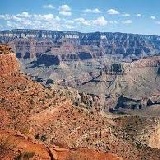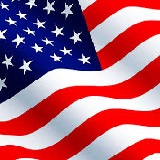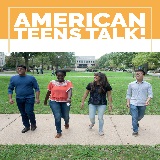|
|
| |
|
|
| |
|
|
|
|
| |
 Travel
America Travel
America
Learn before you travel. This section of Fun Easy
English focuses on facts and other cool stuff about
your favorite U.S. state. This is great English
reading practice. This page focuses on the state of
Massachusetts. |
 Hey
if you cannot understand something on this page, Hey
if you cannot understand something on this page,
then use the Fun Easy English
dictionary
(opens in a new window) |
|
|
 Massachusetts Massachusetts
One of the six New England states, and one of the
first 13 states in the Union (it entered in 1788),
Massachusetts is known as the "Bay State" or as the
"Old Colony State." The Pilgrims established their
settlement at Plymouth in 1620, arriving on the
Mayflower. They were followed shortly by the
Puritans, who established the Massachusetts Bay
Colony. The Puritans named their colony after a
local Indian tribe whose name means "a large hill
place." The birthplace of many of the ideals of the
American Revolution, Massachusetts attracted people
who believed in self-government. It's appropriate
that the state flower is the mayflower, also known
as the trailing arbutus. |
|
Massachusetts
State Flag
The flag of Massachusetts features the state's coat
of arms against a field of white (on both sides of the
flag).
The Massachusetts state flag was approved in its final form
in 1971 (previously a green pine tree adorned the obverse
side of the flag). The coat of arms includes the state's
Latin motto: "Ense petit placidam sub libertate quietem"
("By the sword we seek peace, but peace only under
liberty"). |
|
Source:
State Symbols USA |
|
|
 Massachusetts
State Facts Massachusetts
State Facts
Picture: state seal of Massachusetts |
|
State Capital |
Boston |
|
Nickname |
Bay State / Old Colony State |
|
Motto |
Ense Petit Placidam Sub Libertate quietem (By the
Sword We Seek Peace, But Peace Only Under Liberty) |
|
Statehood |
May 16, 1788 (6th) |
|
Origin of Name |
Named after local Indian tribe whose name means "a
large hill place." |
|
Largest Cities |
Boston, Worcester, Springfield, Lowell, New Bedford |
|
Border States |
Connecticut, New Hampshire, New York, Rhode Island,
Vermont |
|
Area |
7,838 sq. mi.; 45th largest |
|
State Bird |
Black-capped Chickadee (Penthestes atricapillus) |
|
State Flower |
Mayflower (epigaea regens) |
|
State Tree |
American Elm (ulmus americana) |
|
State Song |
Hail Massachusetts |
 Travel and tourism
site for Massachusetts - This state travel and
territorial tourism site provides ideas for your vacations,
meetings, and more. Travel and tourism
site for Massachusetts - This state travel and
territorial tourism site provides ideas for your vacations,
meetings, and more. |
|
|
Massachusetts Stories |
|
|
Feast of the Blessed Sacrament
Have you ever heard of a place named Madeira?
Madeira is a semi-tropical island in the Atlantic Ocean
approximately 600 miles southwest of Portugal. As far back as the
late 1700s, whaling ships from New Bedford, Massachusetts, visited
Madeira for supplies and to hire skilled crews for long whaling
voyages. Whale ships returning to New Bedford brought the Madeiran
sailors with them, and many settled in the area. Today, New Bedford
has the largest population of people with Madeiran ancestry in the
United States.
Because of this connection to Madeira, New Bedford is home to the
largest Portuguese feast in the world. The Feast of the Blessed
Sacrament is an annual four-day event that begins with the
Benediction of the Blessed Sacrament, a medieval rite of devotion,
followed by a parade that lasts two and a half hours. Traditional
Portuguese food is served and music is performed. The original feast
was a strictly religious celebration begun in 1915 by four
immigrants from Madeira as a re-creation of the feast celebrated in
their home villages. |
|
|
The Boston Massacre
Do you know who is considered to be the first hero of the American
Revolution?
The Boston Massacre was a struggle that took place in Boston,
Massachusetts, on March 5, 1770, just before the start of the
American Revolution. Late that day, a crowd of colonists gathered to
shout at and bother some British troops. Boston residents were
resentful of the presence of the troops in their city. As tension
mounted, the soldiers suddenly fired their muskets. Five colonists
were shot and killed. Crispus Attucks, a black sailor and former
slave, was shot and became the first person to die in the American
Revolution.
The violent incident became a rallying point for American patriots,
led by Samuel Adams. Crispus Attucks's body was laid out at Faneuil
(pronounced fan-yule) Hall in Boston. Patriot leaders organized a
funeral procession for the five who were killed. Paul Revere
produced the engraving shown here of the Boston Massacre. It was
used as propaganda (something used to help or harm a cause or
individual) to demand the removal of British troops from Boston. Due
to the increasing tension in the city, British troops temporarily
withdrew from Boston to Fort William on Castle Island. The British
solders involved in the Boston Massacre were also brought to trial.
Two of them were found guilty of manslaughter, punished, and
discharged from the army. |
|
|
The Jackson Homestead -- Station on the
Underground Railroad
If you were an escaped slave before the Civil War the best way to
travel was along the Underground Railroad. This wasn't a real
railroad but a secret system located throughout the Northern states.
The system helped escaped slaves from the South reach places of
safety in the North or in Canada, often called the "Promised Land,"
because U.S. slave laws could not be enforced there. The slaves
often wore disguises and traveled in darkness on the "railroad."
Railway terms were used in the secret system: Routes were called
"lines," stopping places were called "stations," and people who
helped escaped slaves along the way were "conductors." One of the
most famous "conductors" on the Underground Railroad was Harriet
Tubman (an "Amazing American"), a former slave who escaped from
Maryland.
William Jackson's house in Newton, Massachusetts, was a "station" on
the Underground Railroad. The Jacksons were abolitionists, people
who worked to end slavery. Today, the Jackson House is a museum with
a large collection of historical objects and documents that are used
for research into Newton's past. |
|
|
World's Largest Pancake Breakfast
When you think of pancakes you might think of the kind served in
America, hot with melted butter and maple syrup. But in reality,
people around the world love pancakes. As a result, there are lots
of different kinds. In America, pancakes are made with buttermilk
and served for breakfast. In Russia, pancakes are called blinis, and
are made from buckwheat flour and often served with caviar and sour
cream. The Chinese use wheat flour and hot water to make pancakes in
dozens of ways. In France, pancakes come in the form of a lacy
crepe. In India, there's the Gujarati pancake. Crispy and
wafer-thin, it comes stuffed with spicy potatoes and yogurt. Did you
know there were so many ways to make and serve pancakes?
In 1986, an event that bills itself as the World's Largest Pancake
Breakfast was revived for the 350th anniversary of Springfield,
Massachusetts. The breakfast has been held every year since then.
Hundreds of volunteers help with the event. In 1999, more than
71,233 servings of pancakes were served to more than 40,000 people.
If you stacked up all those pancakes, they'd be more than 2 miles
high! |
|
|
The Holyoke St. Patrick's Day Parade
When you think of St. Patrick's Day you probably think of four-leaf
clovers and leprechauns, right? But how much do you know about St.
Patrick himself?
According to legend, St. Patrick drove the snakes from Ireland. No
one really knows if this story is true, since chances are there
never were any snakes in Ireland to begin with. Ireland is an island
nation that was separated from the rest of the European continent
during the Ice Age -- more than 1.6 million years ago. Different
tales tell of St. Patrick standing upon a hill, using a wooden staff
to force the serpents into the sea, and driving them away from
Ireland forever.
Whether or not this is true, March 17 is celebrated as St. Patrick's
Day in many parts of the world. Many Irish people immigrated to the
United States during the Great Potato Famine of the mid-19th
century. Holyoke, Massachusetts, is home to one of the largest St.
Patrick's Day parades in North America. It attracts hundreds of
thousands of spectators with 15,000 marchers. You don't have to be
Irish to participate in or enjoy the parade, but it just so happens
that Massachusetts is home to the descendants of many Irish
Immigrants. |
|
|
New England Confectionery Company (NECCO)
Have you ever eaten a NECCO wafer? Even if you have, you probably
don't know that they are very tough! In the 1930s, Admiral Byrd took
2 1/2 tons of NECCO Wafers to the South Pole -- almost a pound a
week for each of his men during their two-year stay in the
Antarctic. During World War II, the U.S. government ordered a major
portion of the production of the wafers. Since the candy doesn't
melt and is "practically indestructible" during transit, it was the
perfect food to ship overseas to the troops.
Established in 1847, the New England Confectionery Company (NECCO)
is the oldest continuously operating candy company in the United
States. NECCO's delicious beginnings date back to the mid-19th
century, when brothers Oliver and Daniel Chase of Boston invented
and patented many candy-making devices. Oliver invented a lozenge
cutter, the first American candy machine, and in 1850, he invented a
machine for crushing sugar into a dust.
In 1866, Daniel Chase invented the Lozenge Printing Machine,
creating "conversation candies," which had instant and widespread
popularity. Do you know what the most famous "conversation candies"
are? NECCO is the number one maker in the United States of the
famous Valentine conversation hearts with romantic words and
messages stamped on them. About 8 billion a year are produced! |
|
|
Fenway Lives: Baseball Culture
Baseball is known as America's favorite pastime and Fenway Park in
Boston, Massachusetts, is major league baseball's oldest ballpark.
Bostonians have come to love the park as much as they do the team
that plays there. Fenway Park, which opened on April 20, 1912, got
its name because it was in an area of Boston known as the Fens.
Fenway Park has played a big role in American baseball legend. The
largest baseball crowd ever at Fenway was 47,627, for a Yankees
doubleheader on September 22, 1935. The longest measurable home run
ever hit inside Fenway Park landed in the right-field bleachers. The
seat is painted red to mark the spot. Ted Williams hit the home run
on June 9, 1946, off Fred Hutchinson of the Detroit Tigers. The
blast was measured at 502 feet. Legend says that the ball crashed
through the straw hat of the man sitting in the seat -- Section 42,
Row 37, Seat 21!
Today, Fenway is one of major league baseball's few remaining old
ballparks. There has been talk of replacing it with a more modern
structure, but many people in Boston want to restore, rather than
replace, their beloved Fenway. In 1998, they organized Save Fenway
Park! to promote ways to preserve the old ballpark. |
|
Source:
Library of Congress |
|
 Massachusetts Massachusetts
There are no national forests, parks, or
monuments in this state. |
|
|
|
|
|
|
|
|
|
|
|
|
Cool America |
 About the U.S.A. About the U.S.A.
About the U.S.A. is an American
Studies reader that examines the customs, government, and history of the
United States of America. The text provides a wealth of information on U.S.
geography and history; the roles of local, state, and federal government;
national holidays and symbols; the Constitution; and citizenship. The book,
which was written for intermediate to advanced learners of English, contains
a range of activities for language students to practice listening, speaking,
reading, and writing. (opens to a new PDF window)
Great English reading
practice. |
 About
America About
America
Learn about the fascinating history and government of
the United States of America. Lessons include content on
American Government, American History, and Integrated
Civics. Handouts with interactive games and
student-centered activities encompass all four language
skills: speaking, listening, reading, and writing.
Great English reading practice for
beginning to intermediate students. |
 American Teens Talk! American Teens Talk!
Americans Teens Talk! is a collection of interviews of
American high school students. Each interview is accompanied by vocabulary
notes and discussion questions. The interviews in American Teens Talk! give
learners a view into the lives of adolescents in the U.S. Through the
written format of the interviews, learners are able to increase their
vocabulary, practice their reading and listening skills, engage in
discussions, and learn more about U.S. culture. These
interviews come with audio programs.
Great English listening and
reading |
 Sing Out Loud Children's Songs Sing Out Loud Children's Songs
Sing Out Loud Children's Songs includes popular children's songs in the U.S.A. Posters accompany the
individual Sing Out Loud Children's Songs. These
songs come with audio programs.
Great English listening and reading
practice. |
 Sing Out Loud Traditional Songs Sing Out Loud Traditional Songs
The Sing Out Loud Traditional Songs
collection contains 13 traditional American folk songs and song lyrics.
Listen to the songs online, read the lyrics, and collect the posters that
accompany the songs. These
songs come with audio programs.
Great English listening and reading
practice. |
 Sing Out Loud American Rhythms Sing Out Loud American Rhythms
Do you love music? Want to use it
to learn English? Check out the hip-hop inspired song "Peace" from Sing Out
Loud American Rhythms. American Rhythms includes a variety of musical genres
from many different artists in the U.S.A. These songs will appeal to teens
and young adults. These
songs come with audio programs.
Great English listening and reading
practice. |
 Route
66 - Famous American Road Route
66 - Famous American Road
U.S. Route 66 (US 66 or Route 66), also known as the Will Rogers Highway, the
Main Street of America or the Mother Road, was one of the original highways in
the U.S. Highway System. The highway, which became one of the most famous roads
in the United States, originally ran from Chicago, Illinois, through Missouri,
Kansas, Oklahoma, Texas, New Mexico, and Arizona before ending in Santa Monica,
California, near Los Angeles, covering a total of 2,448 miles (3,940 km). It was
recognized in popular culture by both the hit song "(Get Your Kicks on) Route
66" and the Route 66 television show in the 1960s. |
Route 66: The Highway That's the Best
(Beginner - Listening)
A video lesson which shows you an interesting place in America.
The English is
spoken at 75% of normal speed.
Great English listening practice.
This video shows travel along Route 66, the most famous road in
America. |
Chicago: The Start of Route 66
(Beginner - Listening)
A video lesson which shows you an interesting place in America.
The English is
spoken at 75% of normal speed.
Great English listening practice.
This video shows travel along Route 66, the most famous road in
America. |
Going West for Decades on Route 66
(Beginner - Listening)
A video lesson which shows you an interesting place in America.
The English is
spoken at 75% of normal speed.
Great English listening practice.
This video shows travel along Route 66, the most famous road in
America. |
Arizona: The Spirit of Route 66
(Beginner - Listening)
A video lesson which shows you an interesting place in America.
The English is
spoken at 75% of normal speed.
Great English listening practice.
This video shows travel along Route 66, the most famous road in
America. |
Route 66 California: The End of the Trail
(Beginner - Listening)
A video lesson which shows you an interesting place in America.
The English is
spoken at 75% of normal speed.
Great English listening practice.
This video shows travel along Route 66, the most famous road in
America. |
Ten Must-See Route 66 Attractions
(Beginner - Listening)
A video lesson which shows you an interesting place in America.
The English is
spoken at 75% of normal speed.
Great English listening practice.
This video shows travel along Route 66, the most famous road in
America. |
Four Famous Foods On Route 66
(Beginner - Listening)
A video lesson which shows you an interesting place in America.
The English is
spoken at 75% of normal speed.
Great English listening practice.
This video shows travel along Route 66, the most famous road in
America. |
International Tourists Drawn to Route 66
(Beginner - Listening)
A video lesson which shows you an interesting place in America.
The English is
spoken at 75% of normal speed.
Great English listening practice.
This video shows travel along Route 66, the most famous road in
America. |
|
|
|
|
Search Fun Easy English |
|
|
|
|
|
|
|
|
|
|
|
|
|
|
|
About
Contact
Copyright
Resources
Site Map |